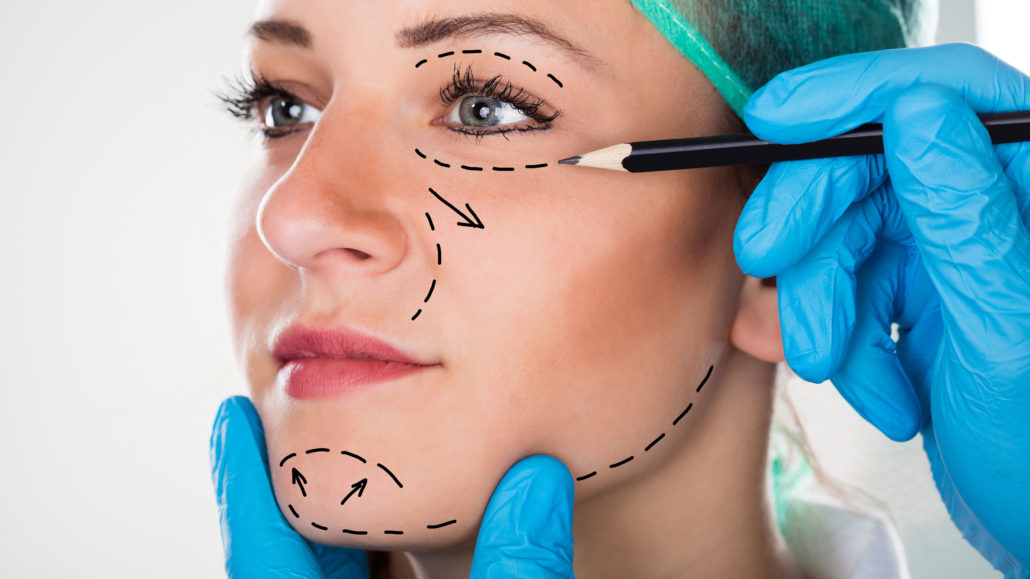


Since June 2023, the courts have convicted 5 persons and fined another 2 persons for falsely claiming to be a registered health practitioner in Australia.
The most recent convictions in Queensland concern a woman who falsely claimed to be a registered nurse; another woman who claimed to be an occupational therapist; and a man who claimed to be a physiotherapist. Convictions in other jurisdictions include a woman who falsely claimed to be a pharmacist; another who claimed to be a registered psychologist; and another who falsely claimed to be a doctor on social media.
The fake social media doctor posted videos of herself providing medical advice dressed as a doctor on Tiktok and Instagram to over 240,000 followers. She pleaded guilty to the charges, and the court imposed a two-year community corrections order as well as ordering her to pay the Australian Health Practitioner Regulation Agency (AHPRA)’s legal costs of the prosecution in the sum of $13,300.
In September 2023 the first jail sentence was imposed under the National Law on a South Australian woman for pretending to be a registered nurse. This was the second time the fake registered nurse had faced charges laid by AHPRA. For her first offence in 2017 she received a fine of $10,500. The court determined that further deterrence was required considering her reoffending and imposed a jail sentence of 4 months and 28 days, with her being released after serving one month in jail.
Section 116 of the National Law makes it an indictable offence for a person to knowingly or recklessly:
A breach of section 116 by an individual has the maximum penalty of $60,000 or 3 months imprisonment or both.
These recent convictions and fines are a timely reminder about the importance of checking your health practitioner’s registration status. A simple free online search via AHPRA’s register can provide you with the answer. Not only can the register tell you if the healthcare provider is registered in Australia, but also if they are subject to any undertakings, restrictions or suspensions.
For more information on AHPRA’s register, please click here.
One download between you and your key to compensation...
Want to fast track the process with our free interactive workbook?
Medical Law © 2020 Privacy & Disclaimer

In 2022, concerns regarding significant delays in Emergency Departments of Queensland hospitals was a frequent topic of conversation in the media.[1]
ABC News reported concerning data that more than 6,900 patients spent more than 24-hours in Emergency Departments of Queensland’s biggest hospitals between 1 June and 30 September 2022.[2]
Patients present to the Emergency Department of a Hospital when they need urgent medical care. But what happens if they don’t get treated in time?
If the doctors at the Emergency Department of a Hospital are overrun or inattentive, this may result in mistakes which cause patients to suffer serious consequences for their health and well-being. In such circumstances, a patient may be entitled to bring a claim for medical negligence.
One mistake which may lead to a medical negligence claim is when the Emergency Department at the Hospital fails to appropriately triage a patient, and this causes them to miss out on the urgent medical treatment they need.
Another mistake which may lead to a medical negligence claim is when a doctor misdiagnoses a patient and incorrectly discharges them from the Emergency Department when the patient in fact required urgent medical care.
Some injuries and conditions can only be treated within a limited time frame. For example, if a patient presents with chest pain, they may be suffering from a heart attack which requires urgent care.
Similarly, if a patient presents with swelling in their leg or arm following a trauma incident, they may be suffering from compartment syndrome which requires immediate surgical relief.
If a patient presents at the Emergency Department with symptoms which indicate they need urgent medical care, failure to appropriately triage them as high priority (i.e. Category 1) and provide prompt treatment may cause the patient to suffer a worse clinical outcome and decreased quality of life. In such circumstances, a patient is likely to be entitled to bring a claim for medical negligence.
Alternatively, if the patient does not require urgent medical care and the delay in treatment does not cause them to suffer a worse clinical outcome, the patient is unlikely to be entitled to bring a claim for medical negligence.
For more information on what damages can be claimed in cases involving misdiagnosis and delayed diagnosis, please click here.
[1] See e.g. https://www.abc.net.au/news/2022-11-13/qld-hospitals-thousands-waiting-24-hours-emergency-departments/101648422 and https://www.brisbanetimes.com.au/national/queensland/extreme-pressure-documents-link-deaths-to-qld-ambulance-and-hospital-waits-20220918-p5biz6.html and https://www.theguardian.com/australia-news/2022/may/07/health-system-in-distress-how-ambulance-ramping-became-a-major-problem
[2] https://www.abc.net.au/news/2022-11-13/qld-hospitals-thousands-waiting-24-hours-emergency-departments/101648422
One download between you and your key to compensation...
Want to fast track the process with our free interactive workbook?
Medical Law © 2020 Privacy & Disclaimer

Around 280 Australians develop diabetes each day, making it one of the largest challenges consuming Australia's health system. However, diabetes is a liveable disease, provided:
Unfortunately, sometimes diabetes can be misdiagnosed and mismanaged by health practitioners. If you believe you have suffered an injury as a result of a health practitioner's negligence, you may be entitled to make a medical negligence claim.
The symptoms of diabetes have been likened to those evident in many other medical conditions, meaning sometimes doctors can miss the signs.
Common symptoms of diabetes can include -
Additionally, a health professional may overlook a particular diabetes diagnosis because the patient:
This information may assist a health professional in making a determination of a diagnosis, however, this list is not exhaustive. A health professional still has a duty of care to undertake all necessary tests and adhere to uniform standards.
Research has evidenced that more than one-third of patients with type 1 diabetes after the age of 30 were initially treated for type 2. While not injurious in all cases, a misdiagnosis of the types may lead to persisting health problems if not treated correctly.
What Are the Consequences That May Arise?
The consequences of mismanaged or misdiagnosed diabetes can be severe. Treatment of diabetes requires precise insulin intake so as to regulate the glucose to ensure levels do not result in any unwanted health complications. A health practitioner's negligence may be causative of heart disease, a stroke, vision impairment, nerve damage and decreased blood flow which could result in amputation.
What Kind of Causation Issues Arise When Pursuing This Type of Claim?
A health practitioner will be liable if your injury is found to be caused as a result of their negligence. If you can prove the negligence of the health professional led to a preventable injury, it is probable you have a medical negligence claim.
However, just because a health practitioner incorrectly diagnoses your condition, that doesn't necessarily mean you have grounds for a medical negligence claim. It must be proven that the health professional acted in a way that fell below the reasonable standard, which then resulted in a breach. To determine what is considered the industry standard, it is typically necessary to obtain instruction and advice from an expert in the field so they can provide advice on how the health care professional departed from the standard.
For the healthcare professional to be liable for your injury, it is necessary to prove that, but for the negligence of the health professional, the harm concurrent with the negligence would not have occurred.
If accurate medical treatment and relief are appropriately provided to a patient after an incorrect initial diagnosis, it is unlikely a medical negligence claim would succeed. This is because the patient would be unlikely to have suffered sufficient damage or injury as a result of the original "negligence" of the health practitioner.
If you believe you have suffered an injury as a result of a health practitioner's negligence associated with your diabetes diagnosis or management, feel free to contact us here.
One download between you and your key to compensation...
Want to fast track the process with our free interactive workbook?
Medical Law © 2020 Privacy & Disclaimer

What is Informed Consent?
Informed consent is a person’s decision to agree to healthcare treatment. This decision must be given voluntarily after accurate and relevant information and advice are provided to them.
Medical procedures and treatments involve risk. Doctors and other healthcare practitioners have a responsibility to inform a person of the risk of the procedure or treatment they are considering.
All health professionals providing treatment have a legal, ethical and professional obligation to obtain informed consent.
All hospitals and day procedure services must have informed consent processes.
Informed consent can be given in writing or verbally.
What is Implied Consent?
Implied consent is a type of consent that is granted by a person’s actions. It is not explicitly provided in writing or verbally.
What is Valid Informed Consent?
For there to be valid informed consent, the healthcare professional must provide information to the patient about the following:
A person must:
The healthcare professional should allow the patient time to ask questions.
What if a Healthcare Professional Fails to Gain Informed Consent?
If a failure to obtain informed consent results in an injury, a person may be entitled to make a claim for medical negligence.
For example, the case of Rogers v Whitaker (1992) 175 CLR 479 centred around informed consent and the failure to advise of potential risk. Mrs Whitaker was almost completely blind in her right eye since the age of 9. She consulted with Dr Rogers, an ophthalmic surgeon who advised that he could perform surgery on the eye that would improve its appearance and restore significant sight to it.
After the operation, not only did Mrs Whitaker’s right eye not improve, she developed inflammation in her left eye, which led to a loss of sight in her left eye. Mrs Whitaker then sued Dr Rogers in the Supreme Court of New South Wales for damages for medical negligence. Mrs Whitaker was successful and was awarded over $800,000.00 in damages.
Dr Rogers attempted to appeal this outcome in the Court of Appeal. This was dismissed. Dr Rogers then appealed to the High Court of Australia. This appeal was also unsuccessful.
Ultimately, because Mrs Whitaker was not advised of the potential risks of eye surgery, informed consent was not provided by the patient.
A poor treatment outcome alone does not establish an entitlement to a medical negligence claim based on informed consent. It must be proven that failure to obtain informed consent caused the harm to be suffered.
In this case, it was critical that Mrs Whitaker was unaware of the risks of surgery. Dr Rogers failed to state risks prior to treatment. Additionally, Mrs Whitaker would not have been prepared to risk losing sight in her left eye had she been informed of the risks.
Often, a patient may think that because they have suffered an injury there has been a breach. However, some injuries can be caused by complications or inherent risks of treatment/surgery which are not the fault of the medical provider and are unavoidable.
Did the Breach Cause Harm?
This element of a medical negligence claim is also known as ‘causation.’ It will need to be established that the breach directly caused injury and harm that could have been avoided.
This element can be challenging as there are usually other factors which have, at least in part, contributed to the injuries sustained.
Once the harm/injury resulting from the breach is identified, the loss sustained must be identified in order to claim compensation. To read more about what compensation can be claimed, click here.
One download between you and your key to compensation...
Want to fast track the process with our free interactive workbook?
Medical Law © 2020 Privacy & Disclaimer

When a hospital or doctor fails to provide surgical treatment to the standard of care expected of a reasonably competent practitioner, a patient may be entitled to bring a claim for medical negligence and seek compensation.
However, to be successful in bringing a claim for medical negligence, a patient will need to prove the harm they have suffered was caused by the negligence of the surgeon - not by a known risk or common complication of the surgery performed.
This article will unpack and explain some of the common surgical errors that lead to medical negligence claims, including:
One common surgical error which leads to medical negligence claims is when a surgeon performs the surgical procedure negligently.
All surgical procedures have known risks and complications. Where a known risk or complication of surgery occurs through no fault or error by the surgeon, a patient will not be entitled to bring a claim for compensation.
However, if a surgeon fails to exercise due care and skill when performing a surgical procedure, causing the patient to suffer harm, they're likely to be liable for medical negligence.
An example of this error would be if a surgeon incorrectly placed a metal plate or screw during the surgical repair of a fractured bone and, as a result, the patient's fracture does not heal properly.
Where a patient needs urgent, life-saving surgery, it is important that their doctor ensures they receive prompt surgical treatment.
Where a doctor fails to recognise that their patient requires urgent surgical treatment and fails to take steps to ensure that surgical treatment is promptly received, they may be liable for medical negligence.
For example, if a patient presents to an emergency department or their general practitioner with the symptoms of a stroke, and their doctor fails to appropriately diagnose them and recommend surgical treatment. Early intervention and surgical treatment for a stroke may lead to a better clinical outcome. Accordingly, missing the opportunity for early surgical intervention may mean that the patient suffers more severe and long-term symptoms which could have been avoided.
A further example of a potential claim is where a patient is put on a waiting list for surgery due to limited hospital resources. If the patient is not properly monitored and their condition deteriorates irreparably whilst waiting for surgical treatment, the hospital may be liable for medical negligence.
Whenever a patient undergoes a surgical procedure, they are at risk of sustaining an infection at the surgical site. This is a known risk of surgery.
However, where a surgeon fails to take appropriate measures to manage the risk of infection, they may be liable for medical negligence.
What is appropriate to manage the risk of infection will vary. Some common measures to manage the risk of infection include:
In some cases, surgery is a patient's best treatment option. Although surgery is often considered a last resort, there are occasions where surgical treatment is the most appropriate and effective treatment plan for a patient.
In circumstances where most doctors would agree that a patient's best option is to receive surgical treatment, a doctor may be liable for medical negligence if they fail to recommend or refuse to provide surgical treatment.
An example of this surgical error would be a failure to recommend or a refusal of a request for a caesarian section where it is medically required due to fetal or maternal distress. If a labouring parent suffers harm after being forced to proceed with vaginal delivery when there were circumstances to suggest that a caesarian section was the best delivery option, the doctor may be liable for medical negligence.
A final error which may give rise to a claim for medical negligence is when a doctor recommends and performs a risky surgical procedure when conservative treatment is more appropriate.
Surgery is inherently dangerous, with many potential life-threatening complications. Accordingly, in many cases, surgery should be considered a last resort.
Accordingly, if a patient suffers serious complications after undergoing a risky surgical procedure when less invasive treatment would have likely been effective, they are likely liable for medical negligence.
For example, if a doctor recommends a patient with mild carpal tunnel syndrome undergo surgery when most doctors would agree that conservative, non-invasive treatment options (such as a wrist splint or anti-inflammatory medications) should have been tried first. If the patient suffered serious complications during the surgery, the doctor is likely to be liable for negligence as the treatment plan was inappropriate, and the harm could have been avoided.
One download between you and your key to compensation...
Want to fast track the process with our free interactive workbook?
Medical Law © 2020 Privacy & Disclaimer

The final report from the Independent review of medical practitioners who perform cosmetic surgery was released on 1 September 2022.[1]
The review made 16 recommendations for action by AHPRA and the Medical Board to improve patient safety. We've outlined a summary of the key issues and recommendations from the independent review below.
What are the key issues?
The key issues found are:
What are the recommendations for AHPRA and the Medical Board?
Conclusion
It's clear from the independent review that the cosmetic surgery sector in Australia has been operating without adequate regulation. It will be interesting to see how quickly AHPRA and the Medical Board now act on these recommendations.
One download between you and your key to compensation...
Want to fast track the process with our free interactive workbook?
Medical Law © 2020 Privacy & Disclaimer

Overview:
As mentioned in our previous article, wrongful birth refers to a claim brought by the parents following negligent advice or treatment which deprives them of the choice of avoiding conception or the choice of terminating the pregnancy. Sterilisation procedures, including vasectomy and tubal ligation, have the potential to fail. However, these procedures have been reported to have a failure rate of <1%.[1]
How Can I Claim Compensation From A Failed Sterilisation?
To specifically claim compensation for injuries resulting from failed sterilisation, you will need to prove that the health professional performing the sterilisation procedure was negligent and that this negligence has resulted in an injury. Examples of these claims include the negligent performance of a sterilisation operation (failed vasectomy or tubal ligation) or the failure to warn of the risks of failed sterilisation procedures to prevent conception.
In Queensland, the court cannot award damages for economic loss arising from the costs associated with rearing or maintaining a healthy child which is born as a result of failed sterilisation procedures, failed contraceptive procedures or contraceptive advice.[2] However, a claim may be brought to cover costs up to and including the birth such as antenatal, obstetric and labour care or pain and suffering the negligence has caused.
Case Example
The case, Lee (a pseudonym) v Dhupar [2020] NSWDC 717, highlights how a woman was awarded compensation following a failed sterilisation procedure. In this case, a surgical error was made during a tubal ligation, which resulted in an unplanned pregnancy. The plaintiff consulted the defendant in May 2014 with the view of having an elective tubal ligation to prevent future pregnancies. The plaintiff and her husband already had three children, and the plaintiff planned to commence full-time work. The defendant performed a tubal ligation in August 2014; however, the plaintiff found out she was pregnant in July 2015.
The plaintiff’s fourth child was delivered via caesarean section, and the plaintiff alleged the birth of the child had significantly impacted her emotional wellbeing and capacity to work. The District Court of New South Wales found that the defendant negligently failed to take reasonable precautions and breached their duty of care when applying the Filshie clip to the plaintiff’s left fallopian tube during the surgical procedure.
It was found that the defendant applied the left clip significantly more lateral and around 2.9cm away from the manufacturer’s recommended position and the position endorsed by the Royal Australian and New Zealand College of Obstetricians and Gynaecologists. Therefore, the Court found that the defendant’s positioning of the clip meant she was unable to demonstrate that the left Filshie clip was applied in a manner which would be widely accepted by professional peers in the reproductive medicine field as competent.
No claim was made by the plaintiff for the costs of raising the child, presumably because the child born was not suffering from a disability. In both New South Wales and Queensland, the law limits parents' ability to claim for damages such as the economic loss incurred for raising a child if the child is born healthy and without a disability.[3] However, in this case, the Court found that the plaintiff had suffered economic loss because she was unable to work due to her psychiatric injury that arose from the failed sterilisation procedure, and she was entitled to recover damages. The plaintiff was awarded $408,700.00 in damages.
The respondent appealed the decision, however, the Court of Appeal dismissed the appeal, finding that the plaintiff’s pregnancy was the result of “operator error” when applying the Filshie clip to the left fallopian tube during the sterilisation procedure.[4]
[1] Shilpa Vishwas Date, Jyoti Rokade, Vidya Mule, and Shreedher Dandapannavar, ‘Female sterilisation failure: Review over a decade and its clinicopathological correlation’ (2014) 4(2) International Journal of Applied and Basic Medical Research 81 – 85; Nivedita Bhatta Dhar and J. Stephen Jones, ‘Vasectomy: A simple snip?’ (2007) 23(1) Indian Journal of Urology 6 – 8.
[2] Civil Liability Act 2003 (Qld) s 49B.
[3] Civil Liability Act 2002 (NSW) s 71; Civil Liability Act 2003 (Qld) s 49A – 49B.
[4] Duphur v Lee [2022] NSWCA 15.
One download between you and your key to compensation...
Want to fast track the process with our free interactive workbook?
Medical Law © 2020 Privacy & Disclaimer

Overview:
In Queensland, New South Wales and South Australia, a parent can claim compensation for the reasonable costs associated with a child’s disability if that child has been wrongfully born due to negligence. This is what is known as a “wrongful birth” claim.
What is a wrongful birth claim?
A wrongful birth can arise in the following situations:
In Australia, a child cannot bring a claim for wrongful life. The cause of action lies with the parents of the child, and in New South Wales, Queensland and South Australia, only the additional costs of raising a wrongful birth child with disabilities is compensable.
What damages are awarded in a wrongful birth claim?
In Queensland, s49A and s49B of the Civil Liability Act 2003 outlines that economic loss associated with the costs ordinarily attributed to the rearing and maintaining of a child cannot be claimed. This limits the damages that can be claimed in a wrongful birth claim to the additional costs of caring, rearing, feeding, clothing and educating a disabled child.
This means that if a healthy child is wrongfully born (e.g. conceived due to a negligent sterilisation procedure, however, born healthy), a wrongful birth claim cannot be made in Queensland. This is based on the notion that the birth of a healthy child is not considered to be “an injury”, and consequently, damages cannot arise.
Therefore, in Queensland, an entitlement to compensation from wrongful birth only arises where a disabled child is born. Similar legislation exists in New South Wales and South Australia.
In other jurisdictions, such as Victoria, Western Australia, Tasmania and the territories, the common law still applies (Cattanach v Melchior (2003) 215 CLR 1). Therefore, no such restriction exists with respect to the compensation that may be awarded to a parent of a wrongful birth child.
What is a nervous shock claim arising from wrongful birth?
In addition to claiming compensation associated with the wrongful birth of a child, a parent may be entitled to a claim for nervous shock.
Compensation for nervous shock damages is separate from the damages that can be claimed by the parent(s) for rearing a wrongful birth child. To be entitled to compensation for nervous shock, a claimant must suffer a recognised psychiatric illness as a direct result of witnessing the incident (i.e. the wrongful birth), which must be assessed and diagnosed by an independent psychiatrist.
The compensation that may be awarded in a nervous shock claim falls under the following heads of damage:
For further information on these heads of damage, see our previous article here.
What to do if you believe you may be entitled to compensation for a wrongful birth incident?
You only have three years from the date of negligence to bring a personal injury claim in Queensland. If you believe you may be entitled to compensation for a wrongful birth incident, contact our office for a free initial discussion here.
One download between you and your key to compensation...
Want to fast track the process with our free interactive workbook?
Medical Law © 2020 Privacy & Disclaimer

Overview:
What is a misdiagnosis?
If a medical professional fails to diagnose a medical condition, it is referred to as a misdiagnosis. This can occur if the wrong condition is diagnosed, or, if a doctor fails to diagnose any condition at all.
what is a delayed diagnosis?
A delayed diagnosis can occur if a medical professional fails to:
This results in a delay in the diagnosis of a condition, illness or disease.
A delayed diagnosis of any of the following could result in a worse outcome for a patient:
A real-life example of this is skin cancer. A mole could be originally diagnosed as benign (non-cancerous). If left untreated, this could result in serious injury and illness and even death.
delayed diagnosis and medical negligence
A delayed diagnosis could be considered medical negligence if there is a significant difference between the treatment received and the outcome if the condition had been diagnosed at an earlier stage.
The delay in diagnosis must cause a worse clinical outcome for the patient.
delayed diagnosis of cancer
A delayed diagnosis of cancer can result in a longer illness, more aggressive treatment, or even death.
A 2016 case, Freestone v Murrumbidgee Local Health District[1], is an example of a successful medical negligence claim for delayed diagnosis of cancer.
The Plaintiff was admitted to Wagga Wagga base hospital in January 2004 with abdominal pain. They underwent a CT Scan of their abdomen, but no further investigation was done at the time by the Hospital. The Plaintiff was discharged home.
The Plaintiff was 19 years old at the time of the incident and had a history of Non-Hodgkin’s lymphoma, which she had previously received treatment for.
In 2008, the Plaintiff had another CT Scan. This scan reported a large lesion on the left kidney that was later diagnosed as a nephroblastoma, or ‘Wilm’s tumour’. It was found that the defendant, through its employees, was negligent as they failed to identify and report the mass in 2004.
The failure to report the mass meant that the Plaintiff needed to have their kidney removed, chemotherapy and radiotherapy. The delayed diagnosis caused the Plaintiff to suffer more invasive and prolonged treatment, as well as a psychiatric injury.
The Plaintiff was awarded $609,939.50 in damages:
It is important to be diagnosed appropriately to ensure that life-threatening illnesses are treated early. Early identification and treatment are paramount to survival.
What do you do if you’ve been misdiagnosed?
When communicating with your medical professionals:
Summary
If you have concerns about the treatment you or a loved one have received, you can lodge a complaint with the Office of the Health Ombudsman.
[1] [2016] NSWDC 53.
One download between you and your key to compensation...
Want to fast track the process with our free interactive workbook?
Medical Law © 2020 Privacy & Disclaimer

In our previous article, we explained a failure to diagnose and delayed diagnosis in medical negligence cases.
Overview:
So, what happens next?
Damages in failure to diagnose and delayed diagnosis
If the injured person is successful in establishing breach and causation, then they will be entitled to compensation for their injury, loss and damage.
Compensation is assessed under heads of damage, with the four most common heads of damage being:
Damages are calculated differently in each state and territory in Australia. You can read more about how damages are calculated here.
Interestingly, there is not a significant amount of case law identifying the damages awarded in medical negligence matters. This is because many medical negligence matters settle outside of Court by way of alternative dispute resolution, which simply means by way of negotiation, with or without the assistance of a mediator.
There are significant benefits to settling outside of Court for both a Plaintiff and Defendant, making this the most common way for medical negligence matters to resolve.
That being said, we have summarised some of the available case law setting out damages in failure to diagnose and delayed diagnosis matters.
Jacqueline Lee Freestone -v- Murrumbidgee Local Health District [2016] NSWDC 53
The matter of Freestone involved a delayed diagnosis of a kidney lesion on an abdominal CT scan.
As a result of this failure, the diagnosis was not made until some four years later, at which point the Plaintiff required extensive treatment.
It was accepted that the delay in diagnosis affected the prospects of recovery. However, the Plaintiff failed on a number of other points of causation.
Nevertheless, the Plaintiff was awarded $609,939.50 in damages.
Panagoulias -v- The East Metropolitan Health Service [2017] WADC 118
The matter of Panagoulias involved a delayed diagnosis of bacterial meningitis, which caused severe neurological and physical injury.
As a consequence of the injuries and disabilities sustained, the Plaintiff required ongoing accommodation and care for the remainder of their life.
The Court awarded $4,987,188.00 in damages.
Elysee -v- Hassan [2018] NSWDC 137
The matter of Elysee involved a failure to monitor the Plaintiff’s renal function in circumstances where he had a history of hypertension and diabetes. As such, the condition was undiagnosed and the Plaintiff was not referred for the required treatment.
As a consequence, the Plaintiff’s renal function deteriorated significantly to the point that he would likely require dialysis.
Interestingly a 10% reduction of the award of damages was made to account for contributory negligence. *
The Court awarded $209,700.00 in damages after a reduction of 10% for contributory negligence.
*Contributory negligence occurs when the Plaintiff fails to take reasonable care of their own safety, which contributes to the harm. If a Plaintiff is found to be contributory negligent, this will result in a reduction of the award reflective of the extent that person is found to have contributed to their injury, loss, and damage.
Nouri -v- Australian Capital Territory [2020] ACTCA1
The matter of Nouri involved the birth of a child with severe disabilities and the lost opportunity to terminate the pregnancy.
The Plaintiff’s in this matter argued that the hospital withheld information about their child’s condition. Had such information been disclosed to the Plaintiff’s they would have terminated the pregnancy.
Unfortunately, this case was unsuccessful as the Plaintiffs were unable to prove causation, that being that they would have been able to obtain a termination in the late stages of pregnancy.
However, the Court notionally assessed damages at $1,813,807.00 in relation to the costs of raising a child with disabilities.
Conclusion
As can be seen from the above cases, damages in failure to diagnose and delayed diagnosis matters range significant on the basis of the injury, loss, and damage sustained, the jurisdiction the claim is in, and whether there is a reduction for contributory negligence.
If you have suffered injury, loss and damage due to a medical negligence incident, you should consult a medical negligence solicitor to discuss your rights and entitlements to compensation.
One download between you and your key to compensation...
Want to fast track the process with our free interactive workbook?
Medical Law © 2020 Privacy & Disclaimer